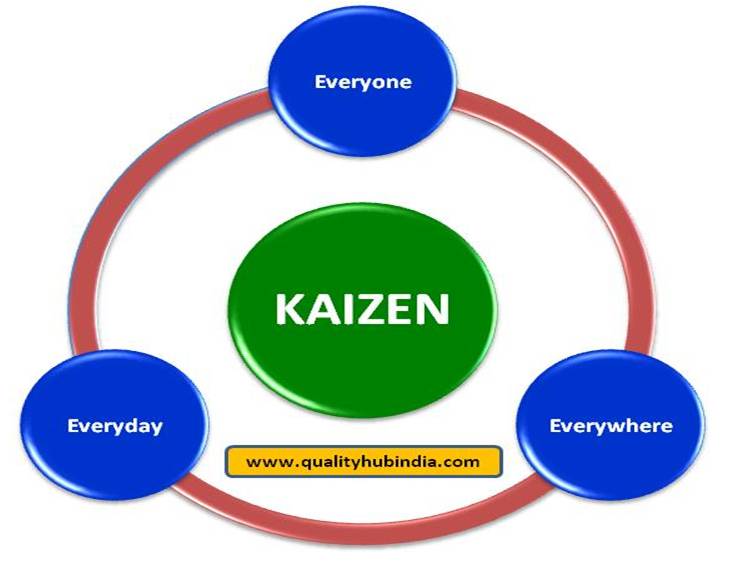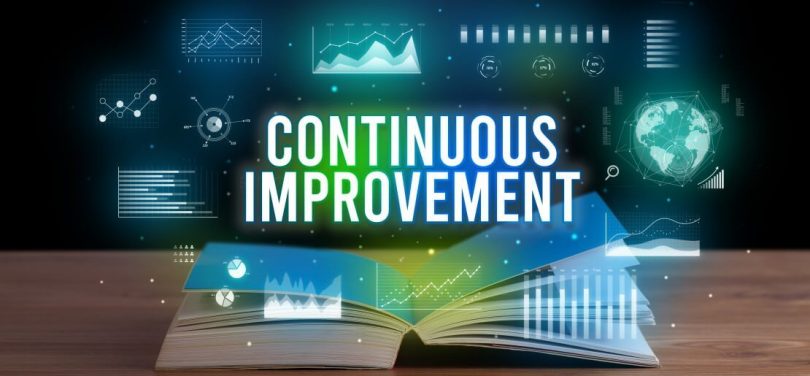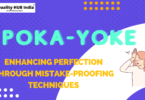Introduction to KAIZEN
Our current world is very different from that of our grandparents. Our world is built on technology that allows for real-time worldwide connection. In this new and exciting era of Industry 4.0 and Quality 4.0, we have created a genuinely global marketplace for products and services. The business world is growing increasingly competitive. It is more important than ever to set ourselves apart from the competition by offering high-quality products at competitive prices. All businesses must strive to increase quality while minimizing waste. It brings the question to our mind, what is KAIZEN? How to implement KAIZEN?
The Lean technique is being adopted by many businesses to reduce waste through employee engagement programs. One of the main cornerstones of Lean methodology is KAIZEN. KAIZEN has been defined in a number of ways, each with minor differences in the word’s definition but the same fundamental concept.
History of KAIZEN
Initially, some Japanese corporations embraced KAIZEN inside their organizations and processes early after World War II, with Toyota serving as an example. Since then, the application of KAIZEN to businesses and commercial operations has spread around the globe.
Masaaki Imai introduced the concept of continuous improvement and KAIZEN to the West in 1986 with his book “KAIZEN: The Key to Japan’s Competitive Success.”
Many firms throughout the world now see KAIZEN as a strategy to gain a sustainable competitive edge.
What is KAIZEN?
KAIZEN is made up of two terms, according to one definition: the first Kai, which signifies change, and the second Zen, which means good. I am fortunate to get personally trained by Masaaki Imai san and in one of the interactions he defined KAIZEN as, “EVERYONE, EVERYWHERE, EVERYDAY”.

What he meant to say is that ‘Everyone’ within the organization irrespective of level and hierarchy which work for making Continual Improvement on all processes i.e, EVERYWHERE on a daily basis which is “EVERYDAY”. When this level of commitment is shown by the company, then only the company progresses in the path of excellence to achieve the desired objective.
As a result, we might say that KAIZEN signifies “improvement” or “better transformation.” A persistent effort by all employees (from the Top Management to the Associate on the shop floor) to guarantee that all of an organization’s procedures and systems are improved is defined as KAIZEN. You’ll quickly understand how vital the KAIZEN process is to a Japanese company if you work for one. KAIZEN is a Japanese approach for helping businesses beat their competitors by adhering to a set of rules and regulations to eliminate defects and ensure long-term superior quality and, ultimately, customer satisfaction.
KAIZEN is based on the following fundamental idea.
“Change is a good thing.”
When we talk about change, it does not indicate working on breakthrough improvement, which we generally target while working on the Six Sigma project. The focus of KAIZEN is more on continual improvement by employee engagement and not primarily on financial saving as targeted in Six Sigma projects. The volume of KAIZEN is generally targeted high by encouraging everybody to think through identifying ideas for making small improvements in processes and work practices.
Why Implement KAIZEN?
KAIZEN aims to improve productivity, effectiveness, safety, and waste reduction, but people who use the method often find out that there’s a lot more:
- Product is used more efficiently and employee abilities are increased, there is less waste.
- Employees are happy when they have a direct say in how things are carried out.
- Increased dedication – team members are more committed to their work and determined to do a good job.
- Increased efficiency leads to lower pricing and higher-quality products, which enhances competitiveness.
- Higher level of customer satisfaction as a result of better quality products with fewer defects.
- Improved problem-solving skills – Staff can fix problems on a regular basis by looking at procedures through the lens of solutions.
- Improved teams collaboration help reduce project lead time and help achieve organization objective more efficiently.
The primary components of KAIZEN are as follows:
- Teamwork
- Personal Discipline Boosted Morale
- Improved Quality Circles
- Improvement Suggestions
How to Implement KAIZEN
“KAIZEN Event” is the first thing that most people think of when they think about KAIZEN. A particular process or department is the focus of this concentrated, short-term effort. A KAIZEN (Japanese: ) is a quick occurrence is also known as a blitz (from the German word for lightning-fast). While there are daily and event-based activities, the core of KAIZEN is not contained in a single activity. KAIZEN is a philosophy of progressive positive change that leads to a state of perfection. KAIZEN is about everyone striving to be better every day.
What are the 07 Deadly Waste (MUDA) of Lean Manufacturing?
Waste, or Muda in Japanese, is defined as a superfluous effort performed as a result of errors, improper planning, bad management, or poor communication.
Professionals in the field of quality control frequently discuss whether there are seven or eight lean wastes. The eighth lean waste differs from the other seven in that its eradication can directly benefit both employees and employers.
The Seven Lean Manufacturing MUDA can be remembered using the acronym TIMWOOD.
- Transportation
- Inventory
- Motion
- Waiting
- Overproduction
- Over processing
- Defects
The eighth waste often considered is “Unused Human Potential”.
Conclusion :
A tiny adjustment can have a significant impact on a group. That is one of the concepts underpinning KAIZEN, but the minor modifications must be ongoing and cumulative to have a greater impact. This series of tiny adjustments can add up to a significant change.
The common misconception is that KAIZEN only applies to small improvements. KAIZEN can be used for little modifications as well as large changes over time. KAIZEN can also refer to a significant shift, such as a transformation in long run.
Popular Books on KAIZEN
- Gemba KAIZEN: A Commonsense Approach to a Continuous Improvement
- KAIZEN: The Key To Japan’s Competitive Success
- The Little Book of KAIZEN: The Japanese art of transformation, one small step at a time
Quality HUB India Offered “Lean Management” Online Courses:
Hindi Version:
- Basics of Lean Management and TPS
- Lean Expert Silver (Level 2)
- Lean Expert Gold (Level 3)
- 5S Expert
- KAIZEN Expert
- Advanced Value Steam Mapping (A-VSM)
English Version:
- Basics of Lean Management and TPS (Under Development)
- Lean Expert Silver (Level 2) (Under Development)
- Lean Expert Gold (Level 3) (Under Development)
- 5S Expert (Under Development)
- KAIZEN Expert (Under Development)
- Advanced Value Steam Mapping (A-VSM) (Under Development)









[…] Kaizen method (Continuous Improvement) […]
You can check our online courses on lean management and KAIZEN Expert as well at http://www.qualityhubindia.com
Your articles are amazing sir , lots of knowledge in a simple language it helped me a lot . Thank you for this articles
Thanks for your feedback dear. Do check our other post as well.
Regards
[…] सिग्मा पद्धति अपशिष्ट (waste) का कारण बनने वाली प्रक्रियाओं में […]